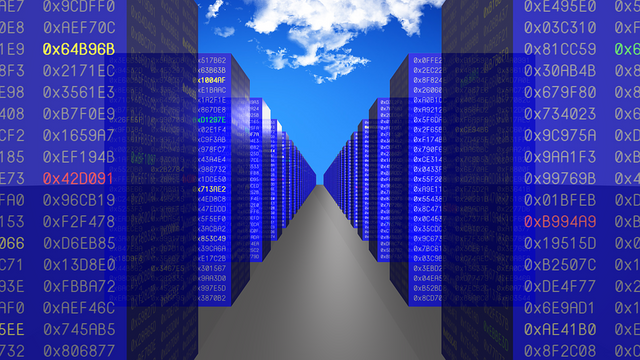Researchers release public database with mal-activities from 2007 through 2017; A youtube video on money as a technology; The world's largest man-made holes; Block.One releases version 2.0 of their EOSIO protocol; and a Steem essay describing the results after a year operating solar panels that were purchased with Steem earnings
Straight from my RSS feed | Whatever gets my attention |
Links and micro-summaries from my 1000+ daily headlines. I filter them so you don't have to.
- Decade of cybersecurity data could predict future malicious online activity - Last Thursday (Oct 3), researchers announced the release of a public database containing records of mal-activities from 2007 through 2017. The so-called mal-activity reports were categorized into six groups: "Malware, Phishing, Fraudulent Services, Potentially Unwanted Programs, Exploits and Spamming". It is hoped that the database will enable researchers to study the ways that sources, scale, and types of mal-activities have changed across time. h/t Communications of the ACM
- Money Is A Technological Fiction (The Invention of $$$) - Describing money as a medium of exchange and a way to store value by making use of standard units of accounting, the It's Okay to Be Smart YouTube channel walks through the history of money. The video starts with ancient technologies like barter, stone tablets, and cowry shells, then moves forward to metal coins, paper receipts, and fiat money that originated in 12th century China. In the modern era, it covers forms of electronic money including wire transfers, credit cards, and even bitcoin and other cryptocurrencies. h/t RealClear Science
To save you a click, here is the video
In order to help make Steem the go to place for timely information on diverse topics, I invite you to discuss any of these links in the comments and/or your own response post.
Beneficiaries
- Burn Steem/SBD - @null - 5%
- Cited author(s) - @moon32walker - 10%
- Fundraising for the Rustin Golden Knights Marching Band - @rgkmb-unofficial - 10%
- Posting and/or scheduling service (steempeak.com) - @steempeak - 5%
- Science, Technology, Engineering, and Math (STEM) curation on Steem - @steemstem - 5%
- Steem/API services (anyx.io) - anyx - 5%
- Steem/RSS services (steemrss.com) - torrey.blog - 5%
My other open posts
(as of Tuesday afternoon)@remlaps
@remlaps-lite
- Curating the Internet: Science and technology micro-summaries for October 8, 2019
- Curating the Internet: Business, leadership, and management micro-summaries for October 8, 2019
- Curating the Internet: Science and technology micro-summaries for October 7, 2019
- Curating the Internet: Business, leadership, and management micro-summaries for October 7, 2019
- Curating the Internet: Science and technology micro-summaries for October 6, 2019
- Curating the Internet: Business, leadership, and management micro-summaries for October 6, 2019
- Curating the Internet: Science and technology micro-summaries for October 5, 2019
- Curating the Internet: Business, leadership, and management micro-summaries for October 5, 2019
- Curating the Internet: Science and technology micro-summaries for October 4, 2019
- Curating the Internet: Business, leadership, and management micro-summaries for October 4, 2019
- Curating the Internet: Science and technology micro-summaries for October 3, 2019
- Curating the Internet: Business, leadership, and management micro-summaries for October 3, 2019
Fundraising for the Rustin Golden Knights Marching Band by @rgkmb-unofficial
- October 4, 2019: Rustin Golden Knights at Chichester Eagles Football Game
- Rustin Golden Knights at Chichester Eagles - Final score
- Rustin Golden Knights at Chichester Eagles - Half time update
About this series
Sharing a link does not imply endorsement or agreement, and I receive no incentives for sharing from any of the content creators.
Follow on steem: @remlaps-lite, @remlaps
If you are not on Steem yet, you can follow through RSS: remlaps-lite, remlaps.
Thanks to SteemRSS from philipkoon, doriitamar, and torrey.blog for the Steem RSS feeds!

This post has been voted on by the SteemSTEM curation team and voting trail. It is elligible for support from @curie and @minnowbooster.
If you appreciate the work we are doing, then consider supporting our witness @stem.witness. Additional witness support to the curie witness would be appreciated as well.
For additional information please join us on the SteemSTEM discord and to get to know the rest of the community!
Thanks for having included @steemstem in the list of beneficiaries of this post. This granted you a stronger support from SteemSTEM. Note that using the steemstem.io app could have yielded an even more important support.
Downvoting a post can decrease pending rewards and make it less visible. Common reasons:
Submit
Downvoting a post can decrease pending rewards and make it less visible. Common reasons:
Submit